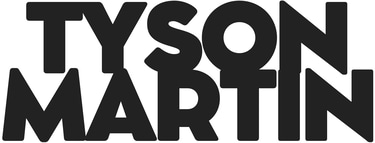From Checklists to Culture: Making Compliance Frameworks Actually Work
When most people hear "compliance," their minds go straight to policies, audits, and checklists. But in today’s fast-moving, reputation-driven business environment, that mindset falls short.


From Checklists to Culture: Making Compliance Frameworks Actually Work
When most people hear "compliance," their minds go straight to policies, audits, and checklists. But in today’s fast-moving, reputation-driven business environment, that mindset falls short. Organizations that treat compliance as a box to check miss a much larger opportunity: to build a culture where trust, accountability, and good decision-making are woven into the way people work.
Frameworks like ISO 27001, NIST CSF, and SOC 2 were never meant to be static documents that collect dust. They were designed to help organizations manage risk, protect data, and operate with integrity. The problem is that many companies stop at implementation and never move into integration. They "pass the audit" but fail to create habits.
True value comes when frameworks stop being external mandates and start becoming internal mindsets. This post explores how to make that shift.
Frameworks Are a Foundation, Not a Finish Line
Every compliance framework offers a structured way to reduce risk and create transparency. They tell a story about how an organization safeguards what matters. But frameworks alone don’t create security or trust—people do.
Passing an audit proves you can follow a set of requirements for a specific moment in time. It doesn't prove your team knows what to do when something changes or goes wrong. That’s the gap between compliance and culture.
Culture is what drives decisions when there’s no checklist in front of you. It’s how teams respond under pressure. It’s what people prioritize when the trade-offs are real.
If frameworks provide the blueprint, culture is the craftwork that brings it to life.
The Danger of Compliance Theater
Many organizations fall into the trap of "compliance theater": running drills, producing documentation, and maintaining audit readiness with little thought to whether those actions improve real security or decision-making.
In compliance theater, teams learn to perform for auditors instead of protecting the business. They prioritize evidence over effectiveness. Over time, this erodes trust, wastes resources, and creates a false sense of confidence.
To avoid this, leaders must ask not just "Did we meet the control?" but "Did this process make us safer, smarter, or more trusted?"
Embedding Compliance into Everyday Decisions
A framework like ISO 27001 offers detailed control objectives, but its real power comes when those objectives guide team behavior. For example:
Instead of reviewing access rights once a year, teams make it part of quarterly planning.
Instead of relying solely on written policies, managers routinely talk about security during team stand-ups.
Instead of logging incidents for compliance, teams treat them as learning moments that improve future design and resilience.
This shift requires more than process updates. It requires leaders at all levels to model the behaviors they want to see and to invite compliance into business conversations, not isolate it in silos.
Making Frameworks Relatable to Teams
One of the reasons compliance often fails to take root is that it feels abstract. "SOC 2 Type II" doesn’t mean much to a product manager or a sales team unless you connect it to something real.
To bridge that gap, translate controls into human language and relevance:
Explain how encryption protects customer trust, not just data.
Show how access controls reduce insider risk and streamline onboarding.
Share stories of breaches avoided or fines reduced due to proactive measures.
When people understand why controls exist—and how they support their goals—they’re far more likely to engage.
Cross-Functional Ownership is Key
Compliance doesn’t belong to the legal team. Or IT. Or the audit committee. It belongs to everyone.
To embed frameworks into culture, organizations must create cross-functional ownership. This means:
Empowering engineering teams to own secure coding practices
Enabling marketing to review campaigns for privacy and data accuracy
Equipping customer service with the training to recognize and respond to data handling issues
This distributed model of responsibility not only reduces risk, it builds internal trust and resilience.
The Role of Leadership in the Culture Shift
No cultural transformation happens without leadership modeling the behavior.
Executives must demonstrate that compliance isn’t just a burden to manage, but a value to uphold. That means asking questions about risk during product reviews. Including trust metrics in executive dashboards. Taking part in incident simulations and tabletop exercises.
When leaders treat frameworks as strategic, not just necessary, the rest of the business follows.
Continuous Improvement Over Static Compliance
Frameworks like NIST CSF are built around the idea of continuous improvement. Identify. Protect. Detect. Respond. Recover. This cycle only works when organizations treat compliance as an ongoing practice, not an annual event.
Regular retrospectives, feedback loops, and metric reviews ensure that controls remain relevant, and that teams stay engaged. It also creates space for innovation: when security and compliance become part of the agile process, they stop being blockers and start being accelerators.
Metrics That Reinforce the Right Behavior
Audit checklists often rely on binary pass/fail indicators. But to build a culture of compliance, you need metrics that tell a richer story.
Think beyond: "Did we complete training?"
Ask instead: "Are employees retaining knowledge and changing behaviors?"
Instead of "Did we submit the report?"
Consider: "Did we act on the findings?"
Good metrics drive good conversations. They help leaders identify where culture is thriving and where it needs support.
Recognize and Celebrate Compliance Wins
Another key to cultural adoption is recognition. Just as companies celebrate revenue wins or product launches, they should celebrate moments when teams demonstrate strong compliance behavior.
Call out the developer who identified a security gap during code review. Highlight the sales rep who handled a customer privacy concern with care. Share metrics that show risk reduction thanks to thoughtful team actions.
These moments reinforce that compliance is part of what makes the business successful, not a side requirement.
Final Thoughts: From Burden to Belief
Compliance frameworks aren’t going away. If anything, they’re becoming more central to how organizations earn trust and prove resilience.
But the future of compliance isn’t about more checklists. It’s about deeper alignment.
When teams understand the "why" behind the frameworks, when leaders model the mindset, and when compliance becomes part of the daily rhythm of work—that’s when the real magic happens.
Organizations that make this shift unlock a powerful advantage: they don’t just survive audits, they thrive in complexity. They move faster, make better decisions, and earn more trust.
Because in the end, a strong culture is the most effective control of all.
About the Author
Tyson Martin is a cybersecurity and trust executive who helps organizations turn compliance into confidence and frameworks into culture. He writes about the intersection of security, leadership, and long-term business value.
